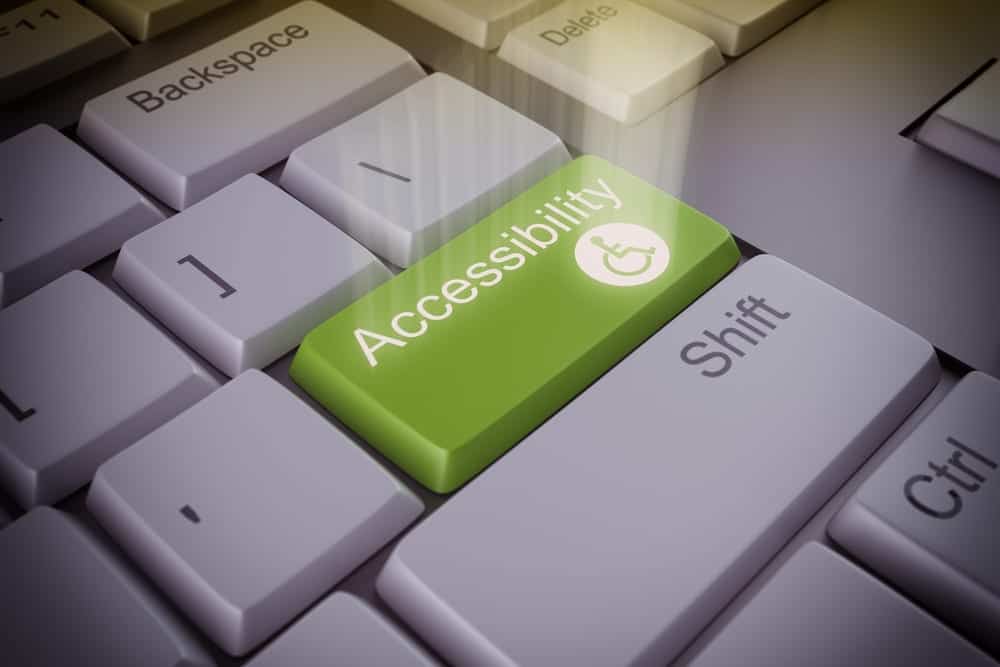What Is Inclusive Web Design?

Inclusive design means creating products which are usable, functional and easy to use. This is so that they meet the needs of as many individuals as possible. This should be regardless of age, availability and circumstance. Websites that are not inclusive mean that some people may not be able to use them, such as people with disabilities. Many people fail to consider customers with different abilities when creating apps or websites. Web designers and developers should learn how to embrace the concept of inclusive web design, which means you can deliver better results to your clients. Websites which are inclusive will be able to reach more customers as they should be able to be used by everyone.
Website Accessibility
Website accessibility means that websites are designed and developed so that people with disabilities can use them. Accessibility can be seen as one of the main goals of an inclusive design strategy. When you are thinking about making a website more accessible, you make sure the site is as user friendly as possible to help those with different abilities. If you don’t think about how accessible your website is then it can create barriers that can make it almost impossible for some people to use. Here are some ability limitations that can affect the way users interact with a website or app;
- Cognitive issues: This affects some people’s understanding which can make it harder to navigate websites
- Auditory issues: This can prevent customers from listening to video or audio content
- Neurological issues: It can be hard for some people to understand certain terms and actions
- Physical issues: It can be difficult to swipe or click certain tools for some people
- Speech problems: This would be a common issue for UI designs
- Visual issues: This can prevent people having a positive experience on sites that are visual
Know Your Audience
To create a website which delivers an accessible experience, you need to understand the people and groups which your client is targeting. You could spend some time going through your customers target audience and asking questions based on their audience groups. This will help you to make design decisions based on users with limited abilities. Before designing your website you should think about a number of things;
- Address any unique needs, such as issues with hearing or sight
- Replace traditional solutions with ones which are more unique to your site, for example rather than relying on colours to highlight a text, you could use font weight instead. This would be ideal for those who are colour blind
- Think about creating a website which appeals to those with and those without disabilities
Clean and clear layouts
Any website that you design should be focused on being as clear as possible. Even if you are not designing for inclusivity, you should aim to give audiences a simple and clean experience. For example, navigation across any website should be understandable. Buttons should be easy to click on any screen size, and have large fonts which are easy to read. When creating new elements for a website, you should think about making it easier for all users. When designing a website which is inclusive you should;
- Test all navigation options to make sure that they are easy to use
- Don’t make the website pages too crowded, less is more when it comes to designing for those with cognitive disabilities
- Make sure the design is easy to use on all screens
Simplify Language
Visual elements on a web page need to be as easy as possible to understand. It is also important to make written content simple too. This will depend on the website’s audience, but ising simple terms instead of complex ones can make a huge difference to those who struggle with reading. You should also think about the typography you use. You could make sure you;
- Underline, bold or resize links to give them a visual contrast
- Have consistent paragraph spacing
- Use simple language to reduce cognitive load
- Describe abbreviations when you use them
- Use clear headings to structure your content
Consider audio and video
Video and audio content are frequently included in the designs of new websites. These visual and auditory tools can be useful to many. However, they may not deliver virtual information to all of your customers. Captions on videos are essential for those with hearing impairments. Transcripts are textual representation of the spoken content in video or audio files. They can be helpful to those who don’t have access to audio on computers or phones. Transcripts can also help those with visual impairments by using a text-to-speech tool, which can describe something to your user. This way everyone will be able to get the information required from the audio and videos.
Inclusive web design is about increasing the potential audience that your clients can earn. Designing for accessibility before anything else will allow you to widen the audience that will be able to use your websites. For example, rather than designing a website for someone with the same visual needs as you, think about making changes for those who are colour blind or partially sighted. This is so you can ensure that your websites are accessible for everyone. If a designer can prove to their clients that they can meet all customers’ needs, then they will be able to provide services to more people and larger audiences.





